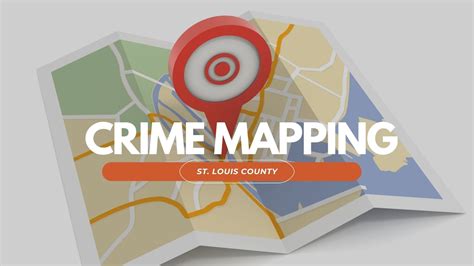St. Louis County, Missouri, has been grappling with crime challenges for decades. To combat this issue effectively, the St. Louis County Police Department (SLCPD) has implemented a groundbreaking crime mapping system that empowers residents and law enforcement alike.

Crime Mapping: A Powerful Tool for Community Empowerment
Crime mapping is a geospatial analysis technique that overlays crime data onto interactive maps. This visual representation enables users to identify crime patterns, hotspots, and trends, providing invaluable insights into the nature and distribution of criminal activity.
The SLCPD’s crime mapping system, powered by the STL CrimeMapping platform, offers a wealth of features:
- Real-Time Crime Data: Access up-to-date information on reported crimes, including location, date, time, and crime type.
- Historical Analysis: Track crime trends over time, enabling comparisons and identifying shifts in crime patterns.
- Customizable Maps: Create personalized maps tailored to specific interests, such as neighborhood boundaries, school zones, or business districts.
- Incident Reports: View detailed reports on individual crime incidents, providing additional context and information.
Benefits of Crime Mapping for St. Louis County
The benefits of crime mapping for St. Louis County are substantial:
- Improved Crime Prevention: Identify high-risk areas and implement targeted prevention strategies to reduce opportunities for crime.
- Enhanced Police Patrols: Allocate police resources strategically to deter crime hotspots and increase visibility.
- Community Engagement: Empower residents with knowledge about crime in their neighborhoods, fostering collaboration and trust between law enforcement and the community.
- Data-Driven Policymaking: Inform policy decisions with evidence-based information, ensuring resources are allocated effectively.
Innovative Applications of Crime Mapping
Beyond traditional crime prevention and patrol optimization, crime mapping can be utilized for a myriad of innovative applications:
- Predictive Policing: Use crime data to predict future crime hotspots, enabling proactive policing efforts.
- Gang Mapping: Identify gang territories and patterns of activity to mitigate gang-related crime.
- Vulnerability Mapping: Assess areas with high concentrations of crime victims, such as the elderly or low-income populations, to develop tailored interventions.
- Environmental Scanning: Correlate crime data with environmental factors, such as vacant lots or abandoned buildings, to identify potential risk areas.
Useful Tables
Table 1: Crime Types and Frequency in St. Louis County
| Crime Type | Frequency |
|---|---|
| Assault | 1,056 |
| Burglary | 634 |
| Robbery | 296 |
| Theft | 1,457 |
| Homicide | 32 |
Table 2: Crime Hotspots in St. Louis County
| Neighborhood | Total Crimes |
|---|---|
| Jennings | 352 |
| Ferguson | 287 |
| Normandy | 243 |
| Berkeley | 236 |
| St. Ann | 221 |
Table 3: Effective Crime Prevention Strategies
| Strategy | Description |
|---|---|
| Community Policing | Building partnerships between law enforcement and residents to foster collaboration and trust. |
| Environmental Design | Modifying physical environments to reduce opportunities for crime, such as improving lighting or removing barriers. |
| Social Programs | Addressing underlying factors that contribute to crime, such as poverty or youth unemployment. |
| Technology | Utilizing surveillance cameras, license plate readers, and other technologies to deter crime and aid in investigations. |
Table 4: Tips and Tricks for Crime Mapping
| Tip | Description |
|---|---|
| Use a variety of base maps | Enhance the visualization of crime data by selecting maps with different features, such as street names or neighborhood boundaries. |
| Filter crime data | Narrow the focus of the map by applying filters for specific crime types, time periods, or geographic areas. |
| Add layers of information | Overlay additional data layers, such as demographic information or infrastructure, to gain a more comprehensive understanding of crime patterns. |
| Share maps with stakeholders | Collaborate with community organizations, businesses, and residents to share crime mapping results and engage in discussions about crime prevention. |
Common Mistakes to Avoid in Crime Mapping
- Data Accuracy: Ensure that the crime data used for mapping is accurate and up-to-date.
- Overinterpretation: Avoid drawing conclusions solely based on crime map data. Consider other factors, such as population density and socio-economic conditions.
- Privacy Concerns: Respect the privacy of crime victims and ensure that their information is handled responsibly.
- Lack of Context: Provide context to the crime mapping results by including information on reporting practices, demographics, and environmental factors.
- Ineffective Visualization: Use clear and concise maps that effectively communicate crime patterns and trends.
